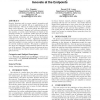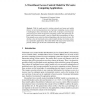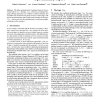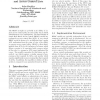ADHOC
2007
14 years 2 months ago
2007
Nodes in a sensor network may be lost due to power exhaustion or malicious attacks. To extend the lifetime of the sensor network, new node deployment is necessary. In military sce...
DBSEC
2010
14 years 2 months ago
2010
Abstract. We consider the problem of developing an abstract metamodel of access control in terms of which policies for protecting a principal's private information may be spec...
DASFAA
2010
IEEE
14 years 2 months ago
2010
IEEE
Achieving data security over cooperating web services is becoming a reality, but existing XML access control architectures do not consider this federated service computing. In this...
SIGCOMM
2010
ACM
14 years 2 months ago
2010
ACM
Security functions such as access control, encryption and authentication are typically left up to applications on the modern Internet. There is no unified system to implement thes...
ATVA
2010
Springer
14 years 2 months ago
2010
Springer
This paper proposes a method for automatically inserting check statements for access control into a given recursive program according to a given security specification. A history-b...
DLOG
2009
14 years 3 months ago
2009
Relation Based Access Control (RelBAC) is an access control model designed for the new scenarios of access control on Web 2.0. Under this model, we discuss in this paper how to for...
DBSEC
2009
14 years 3 months ago
2009
Reflective Database Access Control (RDBAC) is a model in which a database privilege is expressed as a database query itself, rather than as a static privilege in an access control ...
DBSEC
2009
14 years 3 months ago
2009
With the rapid growth in wireless networks and sensor and mobile devices, we are moving towards an era of pervasive computing. Access control is challenging in these environments. ...
ECAI
2010
Springer
14 years 3 months ago
2010
Springer
We define an Intuitionistic Conditional Logic for Access Control called CICL . The logic CICL is based on a conditional language allowing principals to be defined as arbitrary form...
RBAC
1997
14 years 3 months ago
1997
The RBAC metaphor is powerful in its ability to express access control policy in terms of the way in which administrators view organizations. The functionality of simple Role Base...




